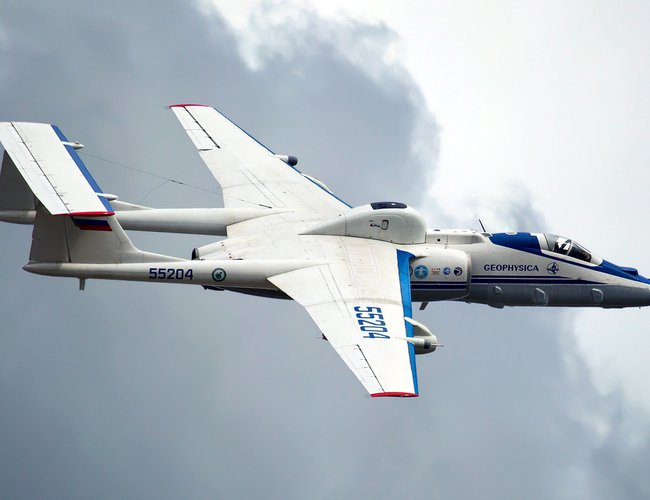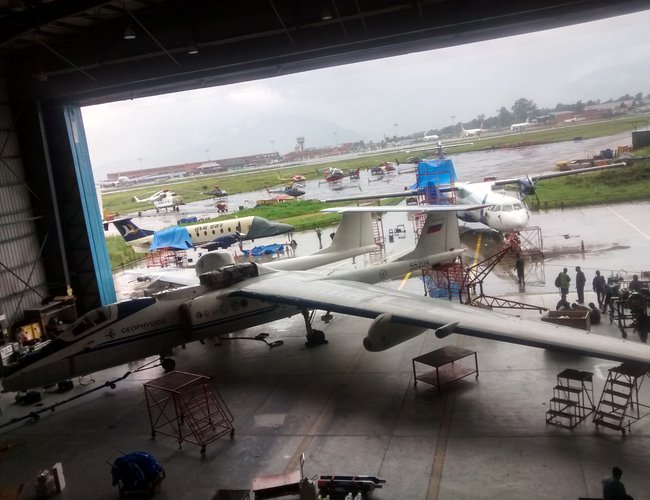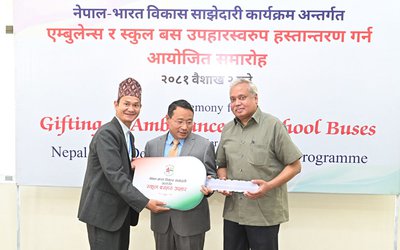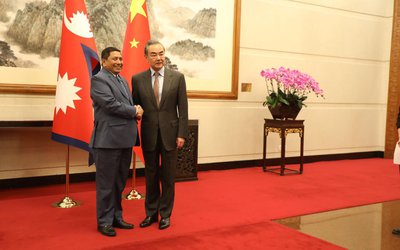
The Asiatic monsoon has much mystic character and it is known as unpredictable. However, the rain pattern affects the life of millions of people of South Asia and other regions.
The nature of rain is so harsh that it killed more than 300 people and affected over 15 million just last week creating a humanitarian crisis in Nepal. Studying these kinds of weather pattern and understanding the nature and mobility of the climate is itself a great thing.
Led by the Alfred Wegener Institute, with funding from European Commission, an international team of scientists is now setting out to close the gap of knowledge on the upper level of Monsoon. It took them almost three weeks, flying in highly sophisticated aircraft in different parts of the region, including Nepal, Bangladesh and India.
They used Russian made Geophysica Mystic 55 to conduct the study. First flown on 16 Aug 1988, the M-55 flies an altitude of 21,360 m (70,080 ft) with take-off weight 20,000 to 25,000 kg. A number of M-55 Geophysica remains in service, performing research roles.
The StratoClim project involves teams from 37 research institutions from 11 European countries, the United States, Bangladesh, India, and Nepal, and marks an important milestone in international research cooperation in the region.
Scientists argue that the formation and properties of the aerosol cloud that sits above the monsoon is a major unknown in climate science, and their potential future changes represent one of the largest uncertainties in climate predictions. Aerosols may warm or cool the Earth's surface, depending on their composition and how they interact with cloud formation processes. There is a little understanding about how monsoon rainfall will respond to changes in emissions of pollutants or to climate change.
"For the first time we were able to study the composition of the air that reaches the stratosphere above the monsoon and affects their composition globally,” said Project leader Markus Rex from AWI.
“We all scientists are happy to have a result to know many unknown patterns of Asian monsoon, its nature and its dimensions. The collaboration of NAS, DHM, KU and other many Nepalese institutions finally worked,” said scientist Dr. Fred Stroch.
According to scientists, during summer, the Asian Monsoon is not only important for Asia but affects weather patterns over the entire northern hemisphere. The Monsoon also acts like an enormous elevator, pumping vast amounts of air and pollutants from the surface up to levels above 16km altitude.
According to the scientists, these attitudes are so high that monsoon air then ascends freely into the stratosphere, the stable layer that overlies the lower part of the atmosphere and contains the Earth's protective ozone layer. Once in the stratosphere, monsoon air spreads globally and persists for years.
Professor Thomas Peter said this is a historic achievement in his entire career which he has aspired for. “Our team is completely satisfied as we studied the black carbon, participles, CO2 and other such chemicals in the air from over 65000 feet height.
“We are really grateful for all stakeholders involved in the project to achieve such a great accomplishment in the area of studying Asian Monsoon,” said Dr.Markus Rx, head of Atmospheric Physic section of Alfred Wegener Institute and professor of atmospheric physics the University of Potsdam.
The Asian Monsoon System is one of the Earth's largest and most energetic weather systems, and monsoon rainfall is critical to feeding over a billion people in Asia. An international team of scientists led by the Alfred Wegener Institute, Helmholtz Centre for Polar and Marine Research (AWI) is now conducting the first-ever scientific mission to the upper levels of the monsoon system, using a high-altitude research aircraft flying out of Nepal.
The campaign is cooperation between the European StratoClim consortium led by the German Alfred Wegener Institute (AWI) and the Nepal Academy of Science and Technology (NAST), Kathmandu University and Department of Meteorology and Hydrology.
“We are very grateful for the support given by Buddha Air providing its hanger and Civil Aviation Authority and Air Traffic Controllers to fly over Nepal,” said professor Rex. “Finally, Embassy of Germany has played very important role.”
The air researched within the project is affected by extremely interesting and complex chemical processes taking place inside clouds. So far no one has ever been able to characterize this air or carry out a scientific research mission above the monsoon.
The StratoClim project was, for the first time ever, to investigate these chemical processes that transport and produce aerosols in the UTS. It is hypothesized that these tiny aerosol particles play a major role in the condensation processes resulting in the formation of the monsoon clouds and affecting the dynamics of the monsoon.
With strong local cooperation established with the International Centre for Integrated Mountain Development (ICIMOD) in Kathmandu, with the Indian Institute of Tropical Meteorology (IITM) and with the University of Dhaka, Bangladesh, the project makes a highly successful research.
“The aircraft field campaign is one major activity within the larger StratoClim project, which is funded by the European Union 7th Research Framework Program. The Aircraft field campaign runs from 20 July to 12 August 2017,” said Professor Markus Rex. StratoClim Coordinator.
"To understand how the monsoon will respond to human emissions of pollutants and to climate change is obviously of crucial importance for the countries directly affected by it. But it matters to all of us as well. Because the monsoon drives weather patterns around the world and affects the stratosphere globally, this research will also improve our understanding of climate processes worldwide and will improve climate predictions where we live, “said Prof. Dr. Markus Rex.
The results will help to better understand how this important weather system affects global climate and how it may change in the future.


- TANAHU HYDROPOWER PROEJCT: A Significant Achievement
- Apr 15, 2024
- AMBASSADOR HANAN GODAR: Sharing Pain With A Nepali Family
- Mar 30, 2024
- VISIT OF KfW AND EIB TO NEPAL : Mission Matters
- Mar 25, 2024
- NEPAL BRITAIN SOCIETY: Pratima Pande's Leadership
- Mar 24, 2024
- NEPAL ARMY DAY: Time To Recall Glory
- Mar 15, 2024
















